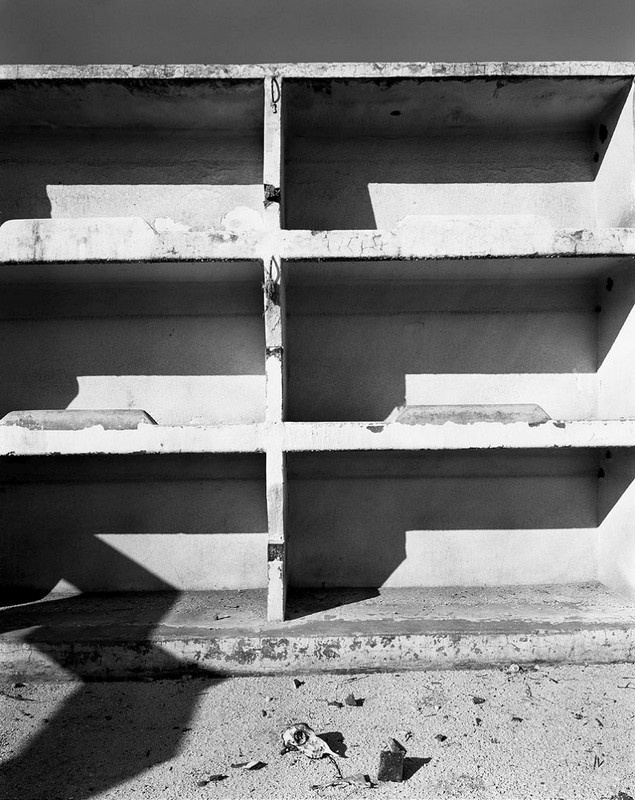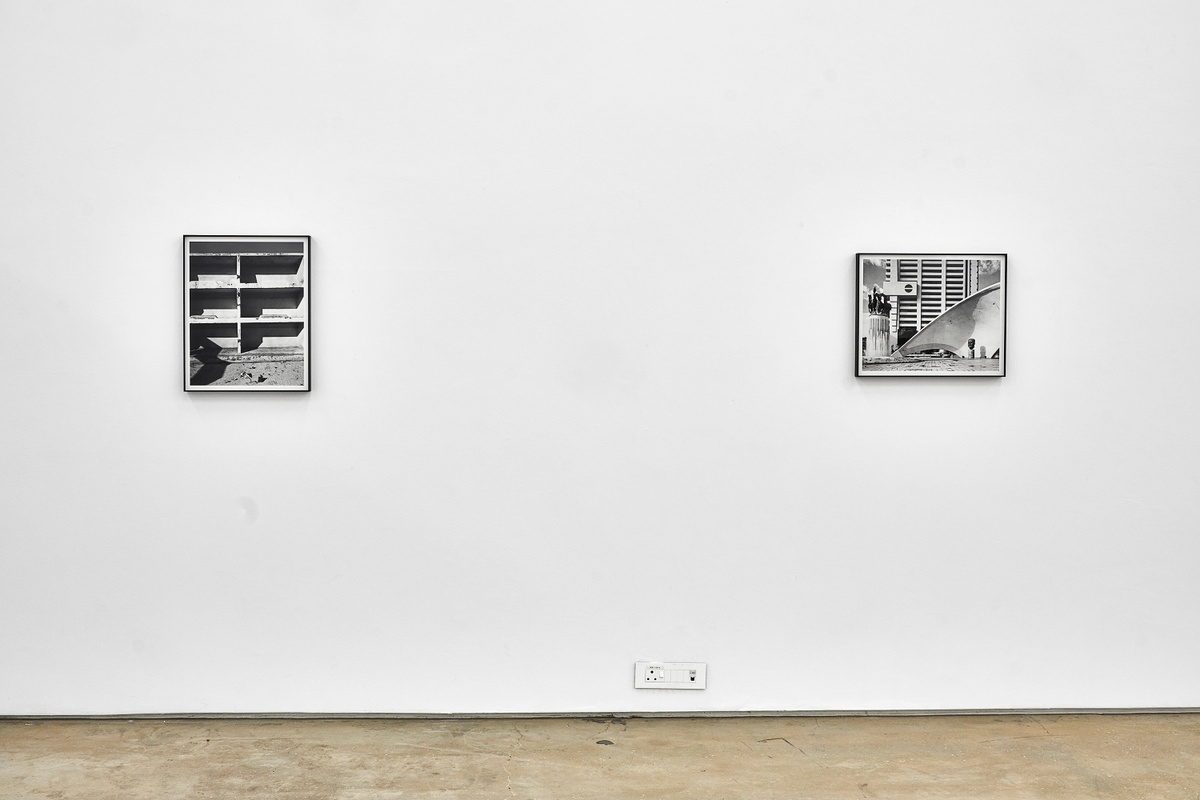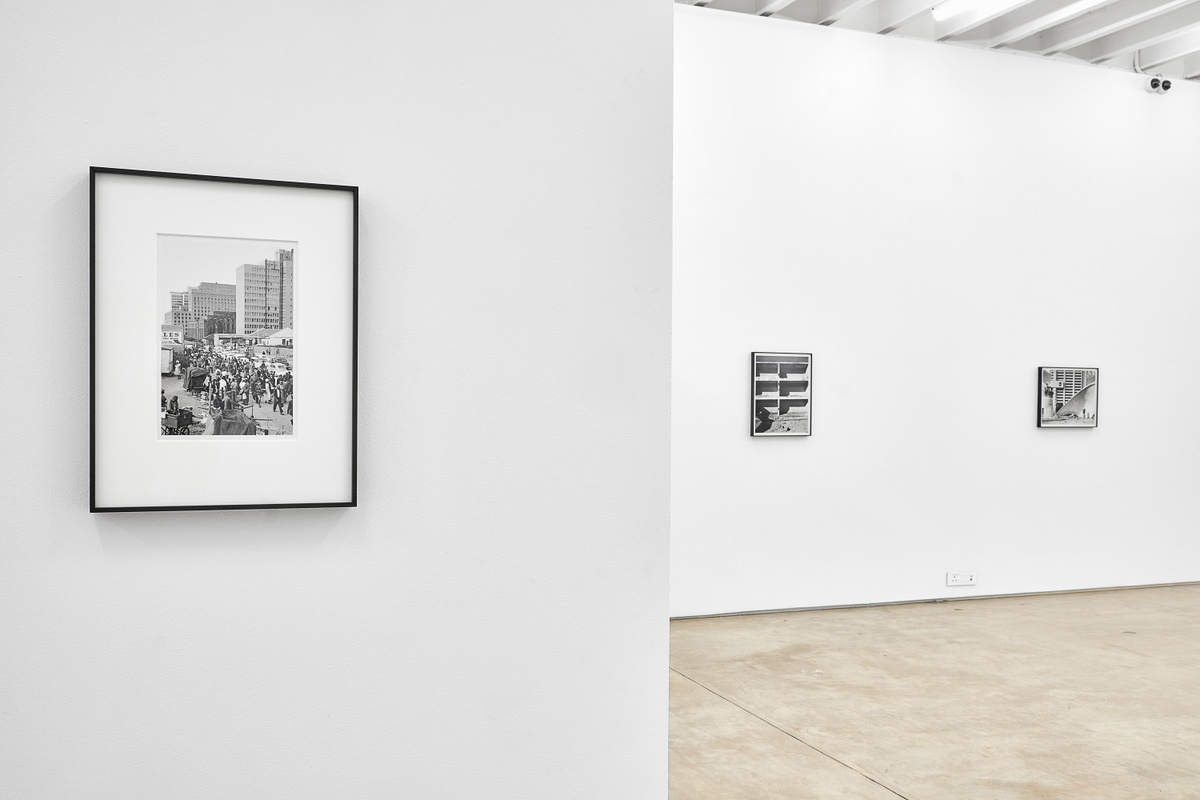David Goldblatt

Included in Goldblatt’s photobook On the Mines (1973), is a series of images of abandoned and decommissioned buildings. The glut of gold in the region, it transpired, was not endless, and with this natural resource all but spent, many prospectors and labourers turned their attention elsewhere. “All along the Witwatersrand now,” Nadine Gordimer wrote in the accompanying essay, “the bulldozers advance, the winches stop turning.” Miners’ bunks in the abandoned Chinese compound (which appears only in the second edition of the photo-essay) is one such image of emptiness, an emptiness that advanced across the gold reef like Gordimer’s bulldozers. It was, however, only temporary and soon followed by the construction of white neighbourhoods and black townships. “Everywhere the mountains of past endeavour are being grassed over” – Gordimer again – “like so many suburban parks.”
This photograph is included in Lifetimes Under Apartheid, 1986; Fifty-one Years, 2001; Kith Kin & Khaya, 2011; On the Mines (second edition), 2012; and Structures of Dominion and Democracy, 2018.
b.1930, Randfontein; d.2018, Johannesburg
“I was drawn,” the late photographer David Goldblatt wrote, “not to the events of the time but to the quiet and commonplace where nothing ‘happened’ and yet all was contained and immanent.” A preeminent chronicler of South African life under apartheid and after, Goldblatt bore witness to how this life is written on the land, in its structures or their absence. Unconcerned with documenting significant historic moments, his photographs stand outside the events of the time and yet are eloquent of them. Through Goldblatt’s lens, the prosaic reveals a telling poignancy. Even in those images that appear benign, much is latent in them – histories and politics, desires and dread. His photographs are quietly critical reflections on the values and conditions that have shaped the country; those structures both ideological and tangible. Among his most notable photobooks are On the Mines (1973), Some Afrikaners Photographed (1975), In Boksburg (1982), The Structure of Things Then (1998), and Particulars (2003).



